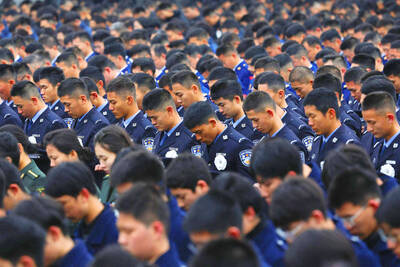In a fight against against the global spread of super-sized frappuccinos and iced cappuccinos, Italy has certified what it considers the classic cappuccino.
In a snub to the Starbucks-driven craze for loading gallons of hot frothy coffee-flavored liquid into cardboard pots, Italy's National Institute for Italian Espresso is defending the traditional squirt of steamed milk over a shot of espresso that is knocked back by millions of Italians every morning at zinc-topped bars all over the country.
The newly certified milky coffee, which is served only in a ceramic cup, was offered to members of parliament and ministers at an event sponsored by the parliamentary culture commission.
The institute has already given a government-backed certification to the perfect espresso coffee.
On Sunday the organization's president, Marco Paladini, stood up for the beleaguered cappuccino, promising "to protect this important expression of our national gastronomic culture ... A great success abroad, but not always made with adequate sensory quality", the newspaper Il Giornale quoted him as saying.
More froth than liquid, the Italian cappuccino can be swallowed in seconds and according to purists should leave a smear of milk on the inside of the cup. Stirring the beverage to mix the milk with the coffee that lurks in the bottom should not produce an overall brown color, but streaks of coffee in the pure white foam.
According to many Italians, the light brown color is similar to that of the robes worn by Italy's Capuchin monks, hence the name.

PARLIAMENT CHAOS: Police forcibly removed Brazilian Deputy Glauber Braga after he called the legislation part of a ‘coup offensive’ and occupied the speaker’s chair Brazil’s lower house of Congress early yesterday approved a bill that could slash former Brazilian president Jair Bolsonaro’s prison sentence for plotting a coup, after efforts by a lawmaker to disrupt the proceedings sparked chaos in parliament. Bolsonaro has been serving a 27-year term since last month after his conviction for a scheme to stop Brazilian President Luiz Inacio Lula da Silva from taking office after the 2022 election. Lawmakers had been discussing a bill that would significantly reduce sentences for several crimes, including attempting a coup d’etat — opening up the prospect that Bolsonaro, 70, could have his sentence cut to

China yesterday held a low-key memorial ceremony for the 1937 Nanjing Massacre, with Chinese President Xi Jinping (習近平) not attending, despite a diplomatic crisis between Beijing and Tokyo over Taiwan. Beijing has raged at Tokyo since Japanese Prime Minister Sanae Takaichi last month said that a hypothetical Chinese attack on Taiwan could trigger a military response from Japan. China and Japan have long sparred over their painful history. China consistently reminds its people of the 1937 Nanjing Massacre, in which it says Japanese troops killed 300,000 people in what was then its capital. A post-World War II Allied tribunal put the death toll

‘UNWAVERING ALLIANCE’: The US Department of State said that China’s actions during military drills with Russia were not conducive to regional peace and stability The US on Tuesday criticized China over alleged radar deployments against Japanese military aircraft during a training exercise last week, while Tokyo and Seoul yesterday scrambled jets after Chinese and Russian military aircraft conducted joint patrols near the two countries. The incidents came after Japanese Prime Minister Sanae Takaichi triggered a dispute with Beijing last month with her remarks on how Tokyo might react to a hypothetical Chinese attack on Taiwan. “China’s actions are not conducive to regional peace and stability,” a US Department of State spokesperson said late on Tuesday, referring to the radar incident. “The US-Japan alliance is stronger and more

FALLEN: The nine soldiers who were killed while carrying out combat and engineering tasks in Russia were given the title of Hero of the Democratic People’s Republic of Korea North Korean leader Kim Jong-un attended a welcoming ceremony for an army engineering unit that had returned home after carrying out duties in Russia, North Korean state media KCNA reported on Saturday. In a speech carried by KCNA, Kim praised officers and soldiers of the 528th Regiment of Engineers of the Korean People’s Army (KPA) for “heroic” conduct and “mass heroism” in fulfilling orders issued by the ruling Workers’ Party of Korea during a 120-day overseas deployment. Video footage released by North Korea showed uniformed soldiers disembarking from an aircraft, Kim hugging a soldier seated in a wheelchair, and soldiers and officials